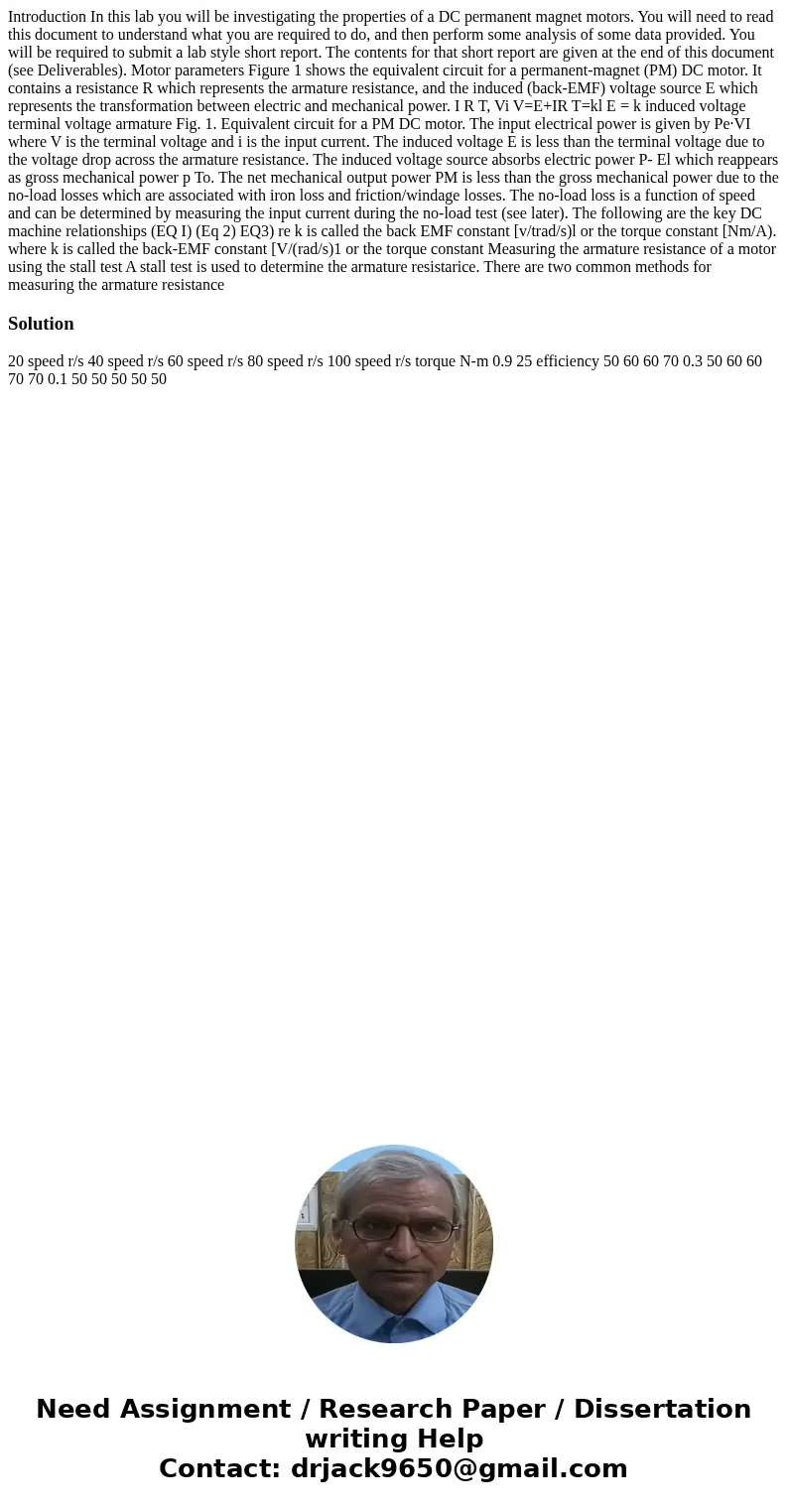Introduction In this lab you will be investigating the prope
Introduction In this lab you will be investigating the properties of a DC permanent magnet motors. You will need to read this document to understand what you are required to do, and then perform some analysis of some data provided. You will be required to submit a lab style short report. The contents for that short report are given at the end of this document (see Deliverables). Motor parameters Figure 1 shows the equivalent circuit for a permanent-magnet (PM) DC motor. It contains a resistance R which represents the armature resistance, and the induced (back-EMF) voltage source E which represents the transformation between electric and mechanical power. I R T, Vi V=E+IR T=kl E = k induced voltage terminal voltage armature Fig. 1. Equivalent circuit for a PM DC motor. The input electrical power is given by Pe·VI where V is the terminal voltage and i is the input current. The induced voltage E is less than the terminal voltage due to the voltage drop across the armature resistance. The induced voltage source absorbs electric power P- El which reappears as gross mechanical power p To. The net mechanical output power PM is less than the gross mechanical power due to the no-load losses which are associated with iron loss and friction/windage losses. The no-load loss is a function of speed and can be determined by measuring the input current during the no-load test (see later). The following are the key DC machine relationships (EQ I) (Eq 2) EQ3) re k is called the back EMF constant [v/trad/s)l or the torque constant [Nm/A). where k is called the back-EMF constant [V/(rad/s)1 or the torque constant Measuring the armature resistance of a motor using the stall test A stall test is used to determine the armature resistarice. There are two common methods for measuring the armature resistance 
Solution
20 speed r/s 40 speed r/s 60 speed r/s 80 speed r/s 100 speed r/s torque N-m 0.9 25 efficiency 50 60 60 70 0.3 50 60 60 70 70 0.1 50 50 50 50 50
 Homework Sourse
Homework Sourse